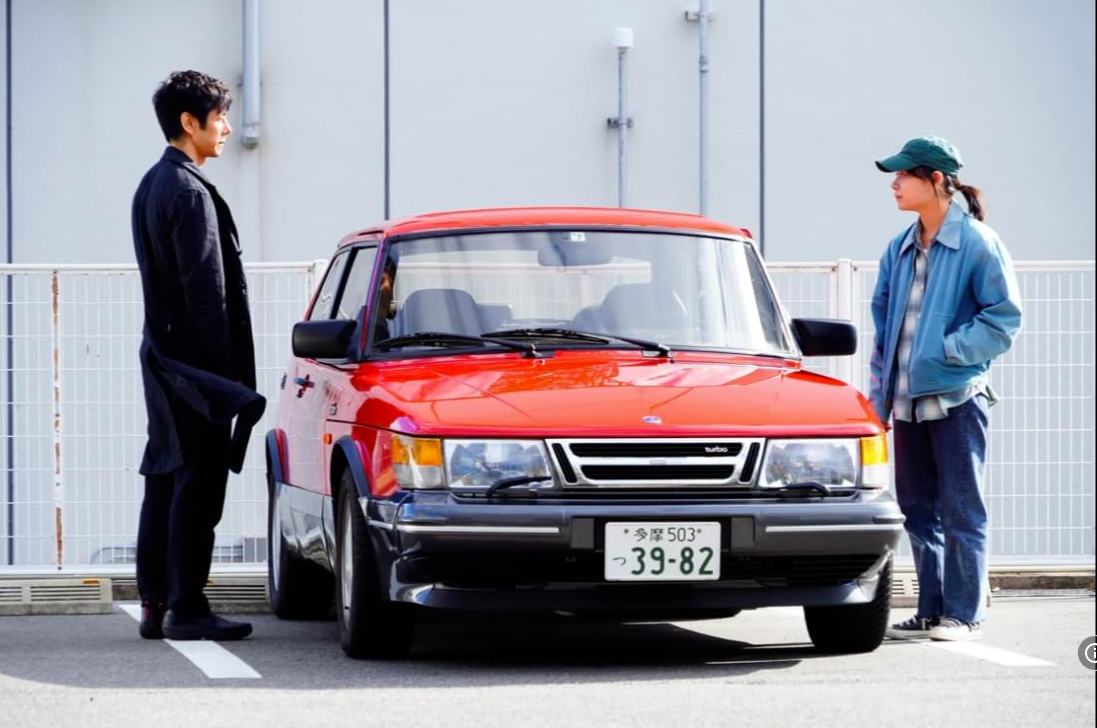OTC Rating : 5/5
Introduction
Ryûsuke Hamaguchi’s Drive My Car (2021), streaming on MUBI, is a masterclass in patient storytelling, emotional depth, and cinematic craftsmanship. Adapted from Haruki Murakami’s short story, this Japanese drama offers a profound meditation on love, loss, communication, and the healing power of art. At nearly three hours long, the film unfolds like a novel—layer by layer, scene by scene—inviting viewers into the inner worlds of its characters.
Story & Narrative Structure
The story follows Yûsuke Kafuku, a theatre actor and director, who is dealing with the sudden death of his wife, Oto. Two years later, while directing a multilingual stage production of Chekhov’s Uncle Vanya, he is assigned a chauffeur, Misaki Watari, a quiet young woman with her own past trauma. As the two spend time together driving through Hiroshima, they gradually open up to one another, forming a subtle, healing bond.
Hamaguchi structures the film with deliberate pacing and emotional restraint. The story is divided into chapters, with a 40-minute prologue that feels like its own short film. The use of Uncle Vanya as a thematic mirror to Kafuku’s life adds layers of subtext and emotional resonance, making the narrative both literary and cinematic.
Image courtesy : IMDB
Direction & Cinematography
Hamaguchi’s direction is quiet, observational, and deeply empathetic. He allows moments to linger, trusting the audience to feel rather than be told. Every scene is carefully composed, every silence meaningful. His minimalistic approach emphasizes the emotional weight of each interaction.
Cinematographer Hidetoshi Shinomiya crafts visual poetry with clean, steady frames. The long driving sequences are particularly striking—car interiors are shot with serene precision, turning the car into a confessional space. The urban landscapes of Hiroshima, framed through the car windows, provide a contemplative visual rhythm.
Performances
Hidetoshi Nishijima delivers a beautifully restrained performance as Yûsuke Kafuku. His subtle expressions, quiet voice, and physical stillness convey the deep sadness he carries. It’s a performance that grows more powerful the longer you spend with him.
Tōko Miura, as Misaki, is equally compelling. Her silence and stillness contrast with her internal struggle, and when her emotions finally surface, they hit with quiet intensity. The supporting cast, particularly Reika Kirishima as Oto and Park Yu-rim as the Korean sign language actor, add richness and diversity to the emotional landscape of the film.
Image courtesy : IMDB
Production Design & Art Direction
The film’s production design is naturalistic and restrained, reflecting the internal states of the characters. Kafuku’s red Saab 900 becomes a symbolic space—a place of routine, memory, and emotional refuge. The theatre rehearsals take place in minimalist, modern spaces that contrast with the messiness of the characters’ emotional lives.
Props and costumes are carefully chosen to match the understated tone of the film. From Kafuku’s clean, neutral clothing to the bare rehearsal stage, everything feels purposeful yet unforced.
Sound Design & Music
Sound plays a major role in Drive My Car. The use of ambient noise—city traffic, tires on pavement, wind, and silence—is essential in creating mood and psychological depth. Long pauses and quiet scenes emphasize the emotional tension between characters.
The film features a minimalist yet emotionally stirring score by Eiko Ishibashi. Rather than dominating scenes, the music weaves subtly into the background, mirroring the introspective mood. One of the most powerful uses of sound comes in the theatre scenes, where actors speak in different languages, including sign language, creating a rich, textured soundscape that transcends spoken dialogue.
Image courtesy : IMDB
Editing
Azusa Yamazaki’s editing is patient and fluid. The film maintains a steady rhythm throughout, allowing scenes to breathe without rushing emotional beats. Transitions are smooth, often using visual or auditory cues to shift from one scene to the next. The decision to begin the film with a long prologue before the opening credits is a bold editorial choice that sets the emotional foundation of the story.
The slow pacing may challenge some viewers, but it’s a deliberate artistic choice that enhances the contemplative nature of the film. It gives the audience space to absorb the subtle shifts in character dynamics and emotional tone.
Conclusion
Drive My Car is a rare cinematic experience—poetic, reflective, and profoundly moving. It takes its time to explore the depths of human emotion with grace and subtlety. With exceptional performances, masterful direction, and meticulous technical craftsmanship, the film stands as a modern classic in world cinema.
Why Watch It:
- A slow-burning yet emotionally powerful story of grief and healing.
- Beautifully restrained performances led by Hidetoshi Nishijima.
- A cinematic blend of literature, theatre, and film.
- Subtle, immersive cinematography and a hauntingly quiet score.

